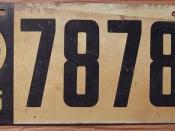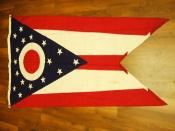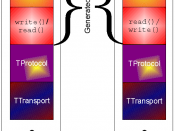Huffman Trucking has created Local Area Networks (LAN) at each of its four locations to help complete day-to-day tasks. A LAN "supplies networking capability to a group of computers in close proximity to each other such as in an office building, a school, or a home" (Mitchell, 2010). This paper will examine the current LAN in each facility and make recommendations for improvement.
Physical Extent of the LAN
The LAN in each facility, Los Angeles, St. Louis, Bayonne, and Cleveland, connects two operations within the facility, office and plant. The Missouri and Ohio networks have identical setups, but the California and New Jersey networks have unique setups. The different setups can be due to the size of the facility and the type of tasks they handle.
Nodes and Workstations
In any network there are nodes that are connected to the network. A node is "a connection point, either a redistribution point or an end point for transmissions" (What is node, 2006).
The nodes that are connected in the Huffman networks are mainly servers, workstations, printers, and routers. Each facility varies in the number of nodes and workstations that are connected to the network. The following table lists the number of nodes and workstation types for each facility
Number of Servers
A server is "a computer designed to process requests and deliver data to other computers over a local network or the Internet" (What is client/server, 2009). The number of servers in a network depends on the amount of data that needs to flow through the network. Servers can be setup to handle specific applications due the amount of data that is needed to run the application properly. For example, the Missouri office has a Lotus Notes Server on its network. This server will handle data specific to the Lotus Notes...


